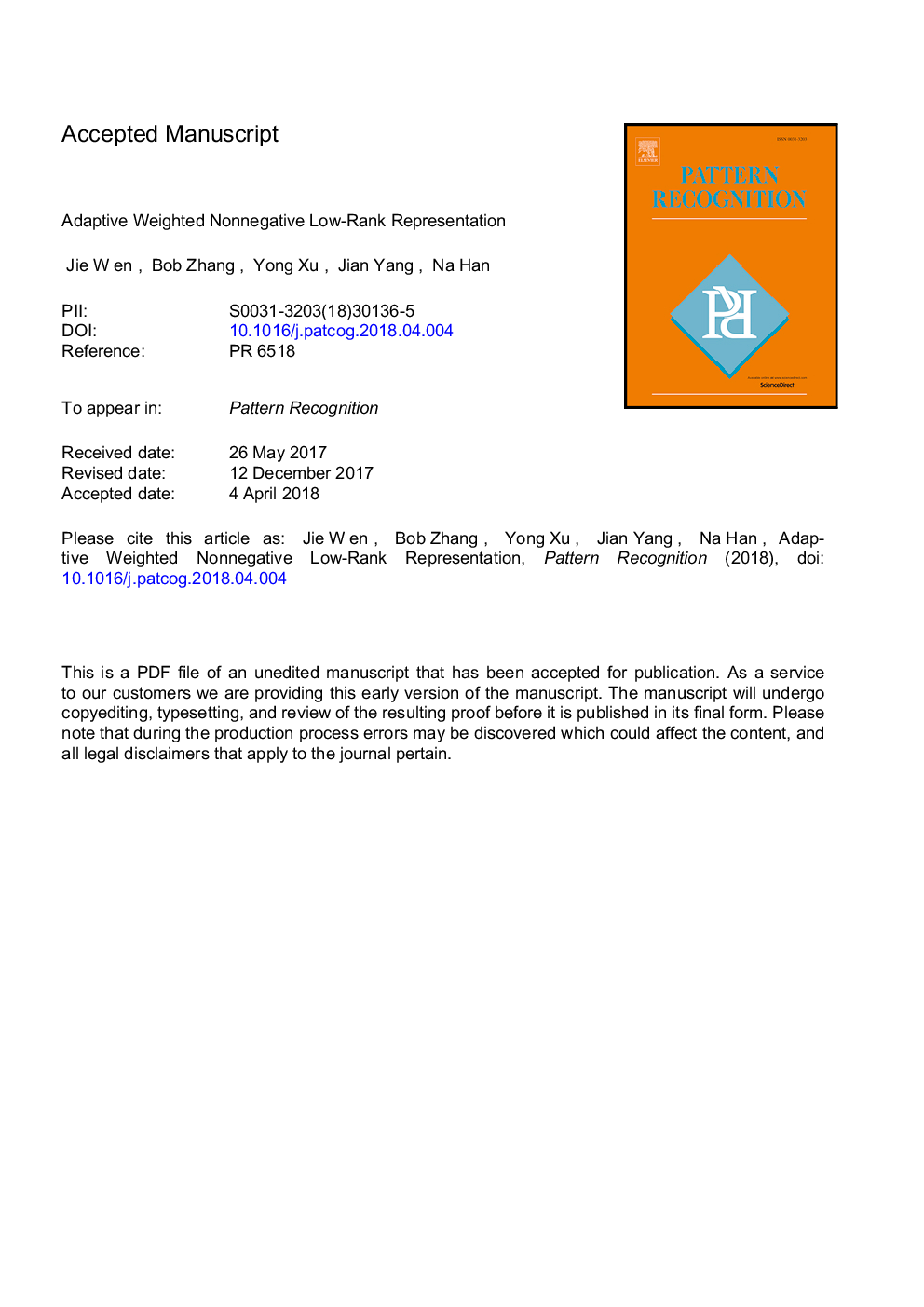| Article ID | Journal | Published Year | Pages | File Type |
|---|---|---|---|---|
| 6938806 | Pattern Recognition | 2018 | 40 Pages |
Abstract
Conventional graph based clustering methods treat all features equally even if they are redundant features or noise in the stage of graph learning, which is obviously unreasonable. In this paper, we propose a novel graph learning method named adaptive weighted nonnegative low-rank representation (AWNLRR) for data clustering. Based on the observation that noise and outliers usually cannot be represented well and suffer from larger reconstruction errors than the important features (clean features) in low-rank or sparse representation, we impose an adaptive weighted matrix on the data reconstruction errors to reinforce the role of the important features in the joint representation and thus a robust graph can be obtained. In addition, a locality constraint, i.e., distance regularization term, is introduced to capture the local structure of data and enable the obtained graph to be sparser. These appealing properties allow AWNLRR to well capture the intrinsic structure of data, and thus AWNLRR has potential to achieve a better clustering performance than other methods. Experimental results on synthetic and real databases show that the proposed method obtains the best clustering performance than some state-of-the-art methods.
Related Topics
Physical Sciences and Engineering
Computer Science
Computer Vision and Pattern Recognition
Authors
Wen Jie, Zhang Bob, Xu Yong, Yang Jian, Han Na,
